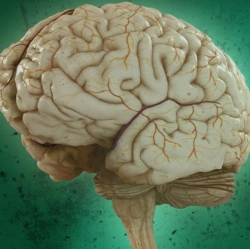
Autism is thought to result from abnormal cell communication. Testing a new theory, researchers at the University of California, San Diego School of Medicine have used a newly discovered function of an old drug called suramin — used medically for the treatment of African sleeping sickness — to restore cell communications in a mouse model of autism, reversing symptoms of the devastating disorder.
The findings are published in the March 13, 2013 issue of the open-access journal PLOS ONE.
“Our (cell danger) theory suggests that autism happens because cells get stuck in a defensive metabolic mode and fail to talk to each other normally, which can interfere with brain development and function,” said Robert Naviaux, MD, PhD, professor of medicine and co-director of the Mitochondrial and Metabolic Disease Center at UC San Diego.
“We used a class of drugs that has been around for almost a century to treat other diseases to block the ‘danger’ signal in a mouse model, allowing cells to return to normal metabolism and restore cell communication.”
“Of course, correcting abnormalities in a mouse is a long way from a cure for humans,” said Naviaux, “but we are encouraged enough to test this approach in a small clinical trial of children with autism spectrum disorder in the coming year.
“This trial is still in the early stages of development. We think this approach — called antipurinergic therapy or APT — offers a fresh and exciting new path that could lead to development of a new class of drugs to treat autism.”
Autism spectrum disorders (ASDs) are complex disorders defined by abnormalities in the development of language, social and repetitive behaviors. Hundreds of different genetic and environment factors are known to confer risk.
